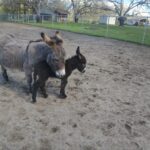Donkeys, often overshadowed by their equine relatives, have a rich and fascinating history that spans centuries. These remarkable animals have played pivotal roles in various aspects of human life, from agriculture and transportation to companionship and conservation. In this detailed blog post, we delve into the history and heritage of donkeys in the United States, exploring their origins, contributions, and enduring legacy.
1. Early Introduction and Origins
Ancient Beginnings:
- Donkeys, also known as asses, have been domesticated for over 5,000 years. Originating from wild asses in North Africa, they were first domesticated in ancient Egypt and Mesopotamia.
- Their sturdy build and resilience made them ideal for carrying loads and traversing harsh terrains, leading to their widespread use in ancient civilizations.
Introduction to the Americas:
- Donkeys were introduced to the Americas by Spanish explorers in the 15th century. They quickly became integral to the development of the New World, particularly in Mexico and the southwestern United States.
- The Spanish brought donkeys as pack animals for their expeditions, utilizing their endurance and strength to navigate the rugged landscapes of the Americas.
2. The Role of Donkeys in American History
Agriculture and Settlement:
- During the 18th and 19th centuries, donkeys played a crucial role in the expansion and settlement of the American frontier. Pioneers relied on donkeys for their ability to carry heavy loads over long distances, aiding in the transport of goods and supplies.
- Donkeys were essential in mining operations, particularly during the Gold Rush era. Their sure-footedness and ability to navigate narrow mine shafts made them invaluable for transporting ore and equipment.
Transportation and Trade:
- In the early days of the United States, donkeys were commonly used in transportation and trade. They hauled goods along trade routes and were a vital part of the mule teams that carried freight across the country.
- The famous 20-mule teams, which included both mules and donkeys, were used to transport borax from the mines of Death Valley to the nearest railroad in the late 19th century.
3. Donkeys in Modern America
Companionship and Therapy:
- In modern times, donkeys have found new roles as companions and therapy animals. Their gentle and affectionate nature makes them ideal for therapeutic programs, providing comfort and companionship to individuals with various needs.
- Donkeys are also popular as pets and companions on small farms and homesteads. Their intelligence and friendly demeanor endear them to families and animal lovers.
Conservation and Heritage Breeds:
- Efforts to preserve and promote heritage donkey breeds have gained momentum in recent years. Organizations dedicated to donkey conservation work to protect endangered breeds and promote responsible breeding practices.
- Donkeys are also used in conservation grazing programs, helping to manage and maintain natural landscapes by grazing on invasive plant species and promoting biodiversity.
4. Types of Donkeys in the United States
Miniature Donkeys:
- Miniature donkeys, standing no taller than 36 inches at the withers, are popular as pets and companions. They are known for their friendly and affectionate personalities.
- Originally from the Mediterranean islands of Sicily and Sardinia, miniature donkeys were brought to the United States in the 20th century and have since become beloved pets and show animals.
Standard Donkeys:
- Standard donkeys are the most common type in the United States, standing between 36 and 54 inches at the withers. They are versatile animals, used for riding, driving, and as working animals on farms.
- Known for their strength and endurance, standard donkeys are often used in pack and draft work, as well as in agricultural tasks such as plowing and harrowing.
Mammoth Donkeys:
- Mammoth donkeys are the largest breed, standing over 54 inches at the withers. Developed in the United States, they were bred for size and strength to create large draft animals.
- Mammoth donkeys are used for heavy work, including logging and pulling carts and wagons. They are also crossed with horses to produce mules, which are prized for their size and strength.
5. Donkey Care and Management
Feeding and Nutrition:
- Donkeys require a diet high in fiber and low in sugars and starches. Good quality hay, supplemented with a mineral and vitamin block, forms the basis of their diet.
- Avoid overfeeding, as donkeys are prone to obesity and related health issues. Provide fresh water at all times and ensure they have access to salt licks.
Shelter and Environment:
- Donkeys need shelter from extreme weather conditions, including rain, snow, and intense sun. A simple three-sided shelter can provide adequate protection.
- Ensure they have access to clean, dry bedding and a safe, secure environment free from hazards.
Health Care:
- Regular veterinary check-ups, vaccinations, and deworming are essential to maintain your donkey’s health. Pay attention to their dental care, as donkeys can suffer from dental issues.
- Hoof care is crucial; regular trimming by a farrier will prevent hoof problems and ensure your donkey’s comfort.
Training and Enrichment:
- Donkeys are intelligent and enjoy mental stimulation. Positive reinforcement training methods work best, as donkeys respond well to rewards and praise.
- Provide enrichment activities, such as toys and puzzles, to keep your donkey engaged and happy.
6. The Future of Donkeys in the United States
Promoting Donkey Welfare:
- As awareness of donkeys’ unique qualities grows, so does the emphasis on promoting their welfare. Education and advocacy are key to ensuring that donkeys receive the care and respect they deserve.
- Organizations and individuals dedicated to donkey welfare work tirelessly to rescue and rehabilitate abused and neglected donkeys, giving them a second chance at a happy life.
Sustainable Farming and Donkeys:
- Donkeys are increasingly being recognized for their role in sustainable farming practices. Their low-impact grazing and natural fertilization abilities make them valuable partners in sustainable agriculture.
- Integrating donkeys into small-scale farming operations can promote soil health, reduce the need for chemical inputs, and support biodiversity.
Conclusion
Donkeys have a rich and enduring legacy in the United States, from their early days as essential workers in agriculture and transportation to their modern roles as companions and conservation partners. Understanding and appreciating their history and heritage helps us honor their contributions and ensure their well-being for future generations. At Pasture Donkeys, we are committed to celebrating and promoting the welfare of these remarkable animals, and we hope this detailed exploration of their history inspires you to join us in appreciating and caring for donkeys.



